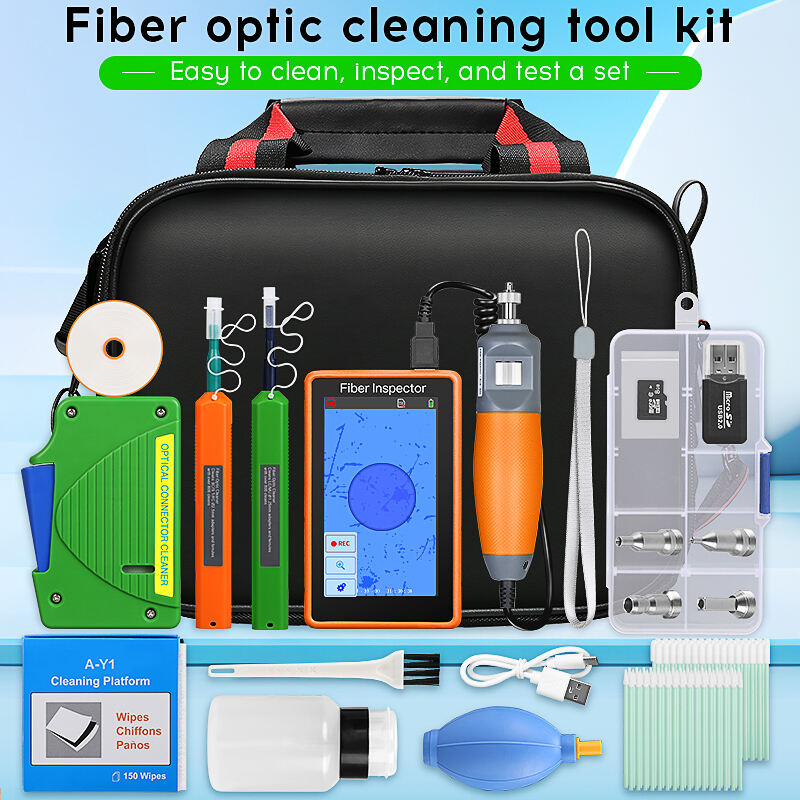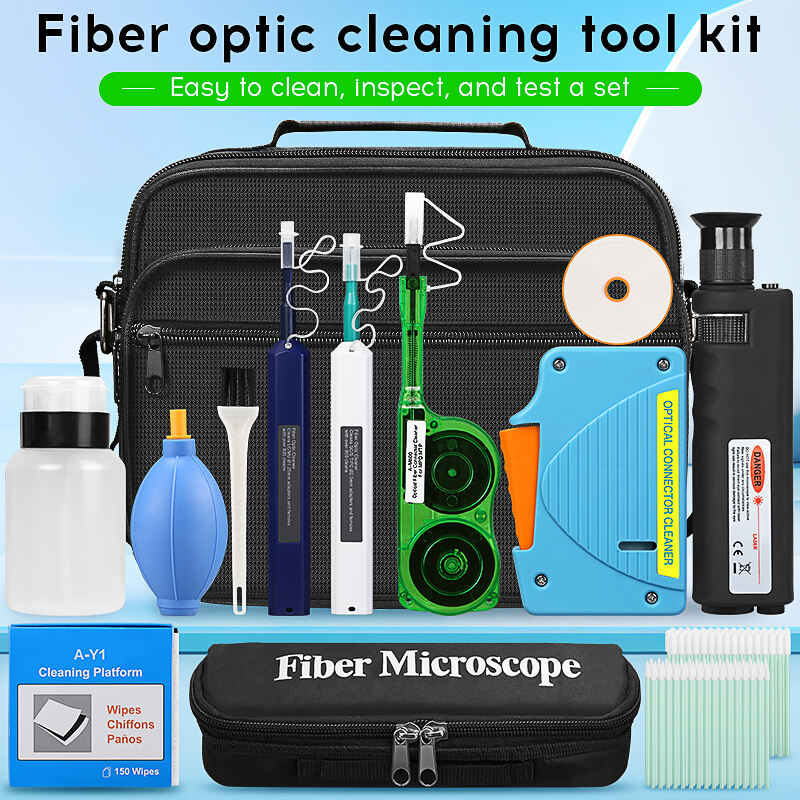Essential Maintenance Guidelines for Optimal Fiber Network Performance
The telecommunications industry continues to evolve rapidly, and maintaining pristine fiber optic connections has become more critical than ever. A reliable fiber optic cleaner serves as the cornerstone of network maintenance, ensuring optimal signal transmission and preventing costly downtime. As we approach 2025, understanding proper cleaning techniques and implementing them effectively can make the difference between a robust network and one plagued by performance issues.
Industry statistics reveal that contaminated connectors cause up to 85% of fiber optic network failures. Even microscopic dust particles or oil from fingerprints can significantly degrade signal quality. This reality underscores the importance of maintaining spotless connections through proper cleaning protocols and high-quality cleaning solutions.
Modern Cleaning Technologies and Equipment
Advanced Cleaning Tools and Solutions
The latest generation of fiber optic cleaner technology incorporates sophisticated features designed to tackle even the most stubborn contaminants. Modern cleaning tools utilize specially engineered solvents that effectively remove both organic and inorganic debris without leaving residue. These solutions are specifically formulated to evaporate quickly, preventing any potential damage to sensitive fiber optic components.
Advanced cleaning platforms now include automated systems that combine precise mechanical movement with carefully calibrated cleaning agents. These systems ensure consistent results while minimizing the risk of human error during the cleaning process. The integration of smart sensors helps technicians identify when connectors have reached optimal cleanliness levels.
Portable Cleaning Solutions
Field technicians require reliable, portable fiber optic cleaner options that deliver consistent results in various environmental conditions. Modern portable cleaners feature ergonomic designs and extended battery life, enabling efficient maintenance operations across multiple locations. These tools often include built-in illumination and magnification capabilities, allowing technicians to verify cleaning results immediately.
Compact cleaning kits now combine multiple tools in space-efficient packages, incorporating features like automatic advancement of cleaning fabric and integrated inspection capabilities. This evolution in portable cleaning technology has significantly improved the efficiency of field maintenance operations.

Implementing Effective Cleaning Protocols
Preparation and Safety Measures
Before beginning any cleaning operation, technicians must ensure they have the appropriate fiber optic cleaner tools and personal protective equipment. This includes anti-static wrist straps, protective eyewear, and powder-free gloves. The work area should be well-lit and free from potential contamination sources such as food, drinks, or excessive dust.
Environmental conditions play a crucial role in cleaning effectiveness. Maintaining appropriate temperature and humidity levels helps prevent static electricity buildup and ensures cleaning solutions perform as intended. Proper ventilation is essential when using any cleaning solvents or compounds.
Step-by-Step Cleaning Procedures
A systematic approach to fiber optic cleaning ensures consistent results and prevents damage to sensitive components. Beginning with an initial inspection helps identify the type and extent of contamination present. The appropriate fiber optic cleaner method can then be selected based on these findings.
For light contamination, dry cleaning methods using specialized wipes or swabs may suffice. However, more stubborn contamination often requires a combination of dry and wet cleaning techniques. When using wet cleaning methods, it's crucial to follow proper drying procedures to prevent any residue formation.
Quality Assurance and Verification
Inspection Techniques
Modern fiber inspection tools provide detailed views of connector end faces, allowing technicians to verify cleaning effectiveness. These devices can capture and store high-resolution images for documentation and quality control purposes. Advanced systems even incorporate artificial intelligence to automatically identify potential issues.
Regular inspection intervals should be established based on network usage patterns and environmental conditions. This proactive approach helps identify potential issues before they impact network performance. Documentation of inspection results creates valuable historical data for optimizing maintenance schedules.
Performance Testing
After cleaning, comprehensive testing ensures connections meet required performance standards. This includes measuring insertion loss and return loss values to verify signal integrity. Modern test equipment can quickly identify any remaining issues that might affect network performance.
Establishing baseline performance metrics helps track the effectiveness of cleaning procedures over time. This data-driven approach enables continuous improvement of maintenance protocols and early identification of potential systemic issues.
Frequently Asked Questions
How often should fiber optic connections be cleaned?
The frequency of cleaning depends on environmental conditions and usage patterns. As a general rule, connections should be cleaned and inspected before each new mating. In high-traffic or dusty environments, more frequent cleaning may be necessary. Regular monitoring of network performance can help determine optimal cleaning intervals for specific installations.
What types of contamination are most harmful to fiber optic connections?
While all contamination can potentially impact performance, certain types pose greater risks. Oil-based contamination, such as fingerprints or skin oils, can be particularly problematic as they tend to spread and are difficult to remove. Mineral dust particles can scratch connector surfaces during mating, causing permanent damage. Even microscopic debris can significantly affect signal transmission quality.
Can cleaning damage fiber optic connectors?
Improper cleaning techniques or unsuitable cleaning materials can potentially damage fiber optic connectors. Using excessive force, contaminated cleaning tools, or incompatible cleaning solutions may cause scratches or leave harmful residue. This underscores the importance of using appropriate fiber optic cleaner products and following manufacturer-recommended procedures to maintain connector integrity.







